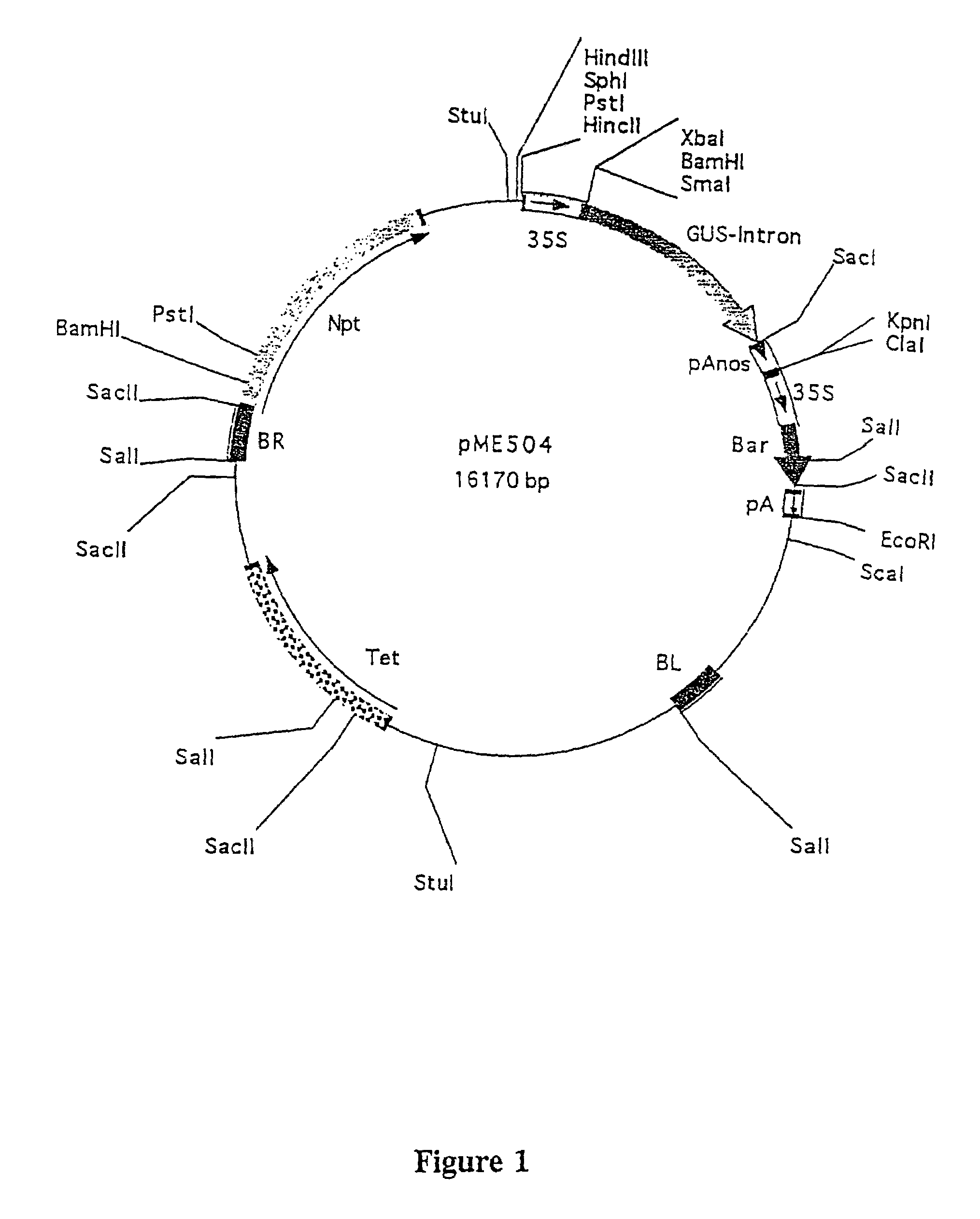Transgenic Lemnaceae
- Summary
- Abstract
- Description
- Claims
- Application Information
AI Technical Summary
Benefits of technology
Problems solved by technology
Method used
Image
Examples
example 1
Transformation Of Lemna And Spirodela Plants By Microinjection
[0074]A color-marker reporter gene (GUS) and a gene conferring resistance to the antibiotic kanamycin (NPT II) were transferred into the Lemnaceae plants (Lemna gibba Hurfeish and Spirodela punctata) by Agrobacterium tumefaciens mediated transformation. This was achieved after suitably preparing the plants and actively promoting DNA transfer into the plant nucleus as specified above.
[0075]Booster medium of the invention (Table 5) markedly enhanced Agrobacterium virulence against Lemnaceae. Applying Agrobacterium to Lemna or Spirodela plants, maintained for two months in MS medium (Table 1 ), while omitting the booster medium drastically reduced microinjection-mediated transformation frequencies as shown in the results of the following experiments:
experiment 1.1
[0076]49 out of 100 microinjected Lemna plants maintained in MS medium were GUS positive when the booster medium of the invention was used, while 3 out of 100 were GUS positive when the booster medium was omitted.
experiment 1.2
[0077]47 out of 100 microinjected Spirodela plants maintained in MS medium were GUS positive when the booster medium of the invention was used, while 2 out of 100 were GUS positive when the booster medium was omitted.
[0078]Experiments 1.1 and 1.2 thus prove that the booster medium of the invention significantly raises the efficiency of transformation.
PUM
| Property | Measurement | Unit |
|---|---|---|
| Diameter | aaaaa | aaaaa |
| Diameter | aaaaa | aaaaa |
| Density | aaaaa | aaaaa |
Abstract
Description
Claims
Application Information
 Login to View More
Login to View More - R&D
- Intellectual Property
- Life Sciences
- Materials
- Tech Scout
- Unparalleled Data Quality
- Higher Quality Content
- 60% Fewer Hallucinations
Browse by: Latest US Patents, China's latest patents, Technical Efficacy Thesaurus, Application Domain, Technology Topic, Popular Technical Reports.
© 2025 PatSnap. All rights reserved.Legal|Privacy policy|Modern Slavery Act Transparency Statement|Sitemap|About US| Contact US: help@patsnap.com

